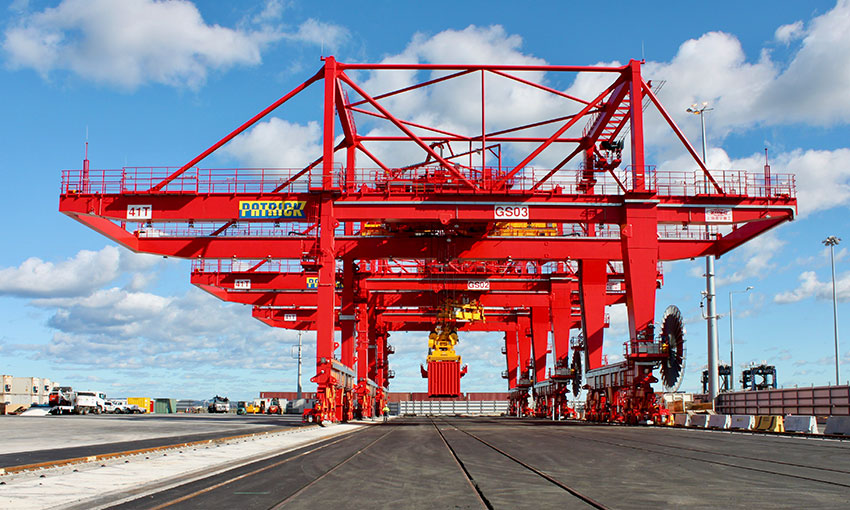A FORMAL investigation is required into automated rail mounted gantry cranes at Port Botany, the Maritime Union says.
In a letter to Patrick Terminal chief operations officer Steve Cox, MUA deputy national secretary Will Tracey raised issues of both safety and productivity.
NSW Ports and Patrick Terminals began work more than a year ago on a $190m project to double ‘on-dock’ rail infrastructure capacity at Port Botany’s Patrick Terminals – Sydney AutoStrad, ensuring a sustainable supply chain.
The project includes investment of $120 million from NSW Ports to deliver ‘on-dock’ rail infrastructure and $70 million from Patrick Terminals to deliver automated rail operating equipment at the container terminal.
But union sources say predicted 1% to 3% exception rates – the rate at which human intervention is required – likely will be 10 times higher and there are also “safety and operational flaws”.
“The Maritime Union of Australia calls on Patrick to immediately suspend any ‘go-live’ implementation of the ARMG cranes and meet with the MUA as well as the health and safety representatives and subject matter experts,” Mr Tracey wrote in his letter.
“Ultimately, the MUA is very concerned that the capital investment from Patrick and NSW Ports has been based on a flawed assumption regarding the efficiency of the ARMG cranes.”
Mr Tracey said it was clear this new technology was overwhelmed “with technical and safety issues”.
“In the event that they are resolved, it is highly foreseeable that the ARMG cranes will be slow in their productivity,” he wrote.
“It is clear that with the flawed technology procured by Patrick, the proposed “33% faster turnaround times” was merely aspirational and will not be realised.
“At a minimum, it is appropriate for Patrick and the parent company Qube, to launch a formal investigation into this flawed automated machinery as well as the flawed risk mitigation process.”
The full letter from Will Tracey can be seen here.
In a statement to DCN, Patrick Terminals said the from the MUA was an attempt to distract management attention on a key infrastructure project that would “benefit importers and exporters using rail”.
“In light of the MUA’s objections to the Project SABRE process, Patrick has itself commenced dispute proceedings in the [Fair Work Commission] to obtain certainty about the process,” a Patrick spokesperson said.
According to Patrick, FWC deputy president Cross has conducted several conferences, and given the failure to resolve the dispute, the matter is now listed for hearing on 15 and 16 December 2020.
According to Patrick, Project SABRE will deliver a world-class operation in Sydney that will benchmark Patrick Terminals with world-leading rail and ARMG operations in Asia, Europe and North America who are using “the same proven technology and infrastructure”.
“The project is being managed and implemented by qualified, experienced and industry leading experts from global organisations who are specialised in their fields,” the spokesperson said.
“The deployment team is focused on delivering one of the safest operations in the world.”
The spokesperson said Patrick had done extensive risk assessments with the workforce in consultation that saw 56 meetings, 308 meeting hours representing over 1,800 man hours of risk assessment and consultation with our valued and experienced workforce.
“Additionally, and in parallel, Patrick engaged with internal and external subject matter experts in the form the safety assessment team and held a further 30 meetings, over 100 meeting hours representing an additional 1000 man hours of risk assessment,” the spokesperson said.
“A total of over 2,800 man hours has been spent on consultation and risk assessment for the project.”
Work has been reportedly completed in accordance with Patrick’s risk assessment framework and in compliance with Australian Standard 4024 Safety of Machinery.

